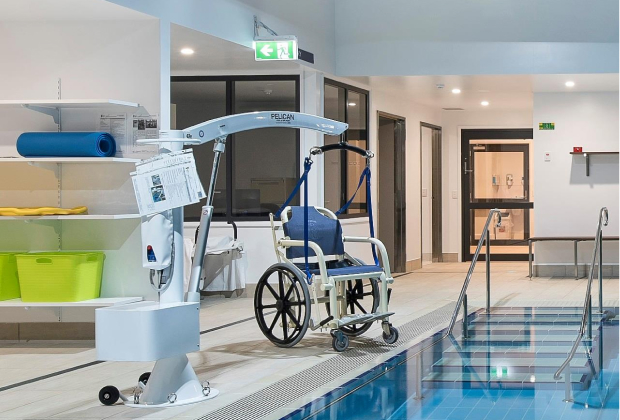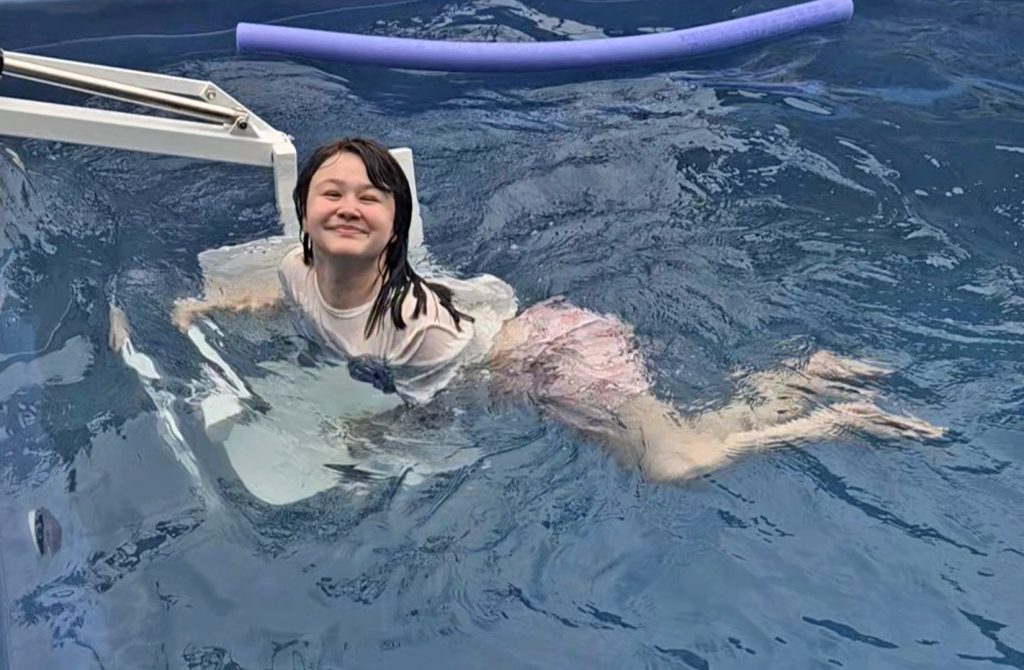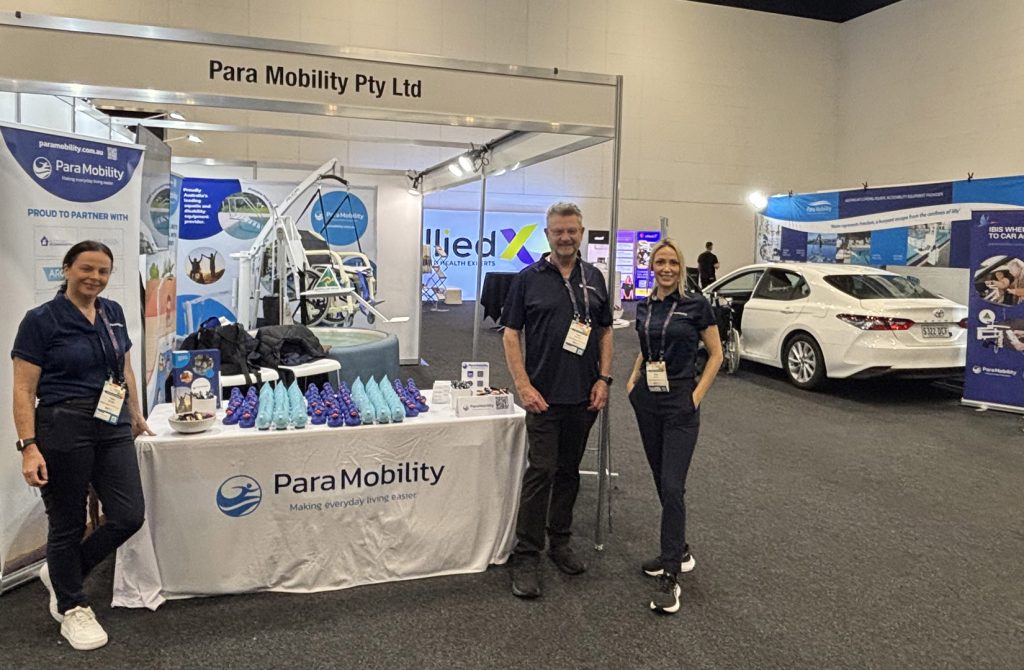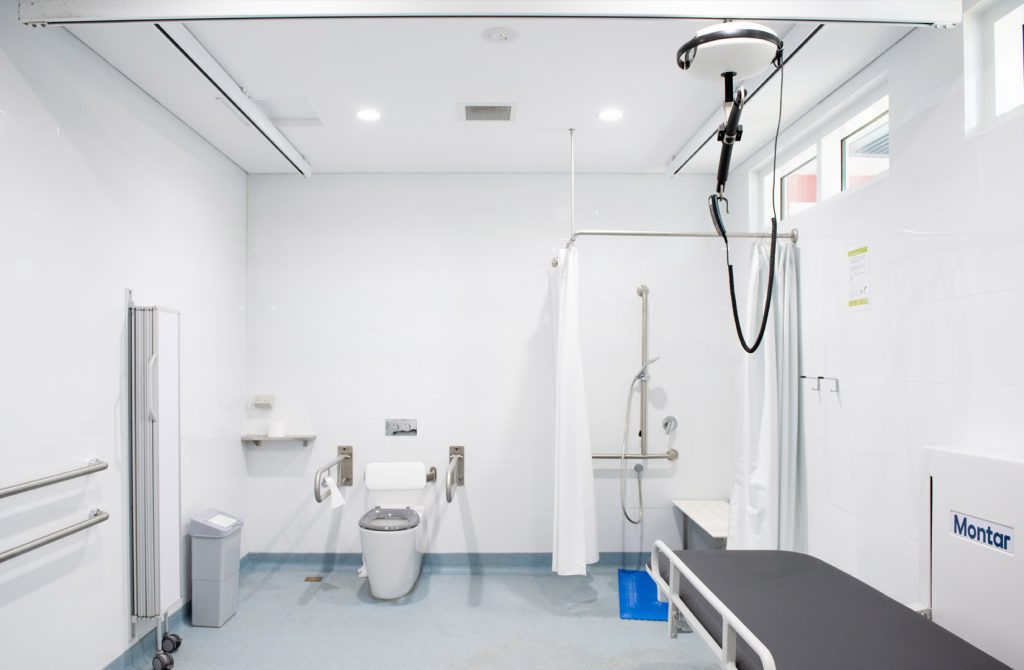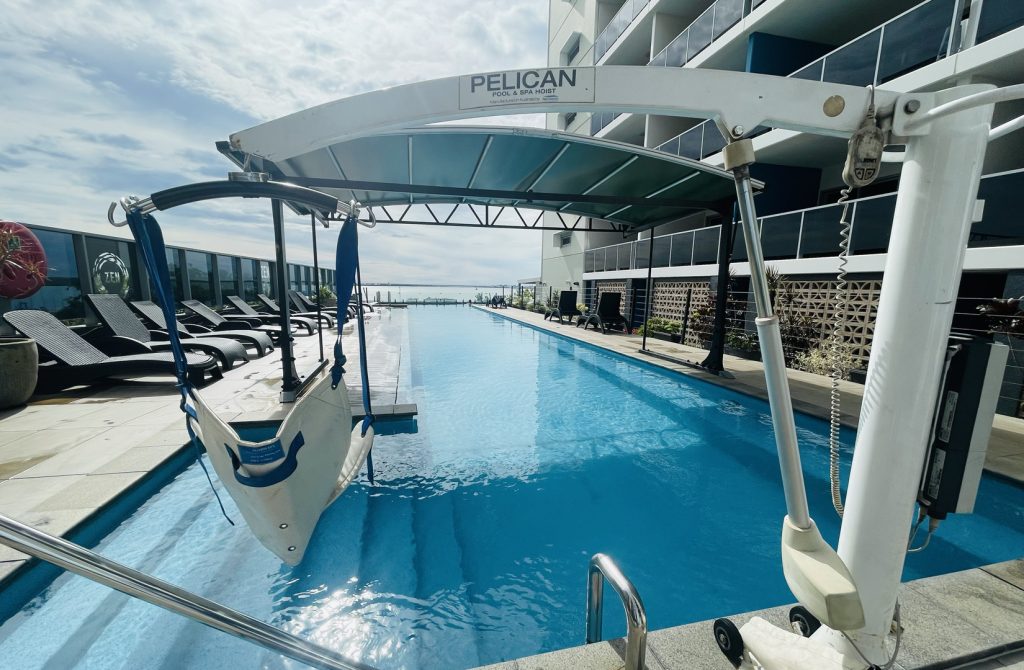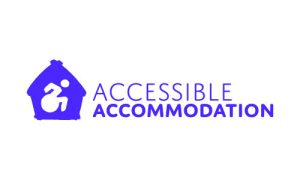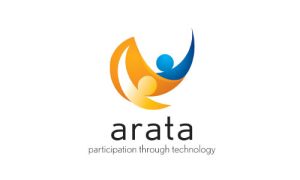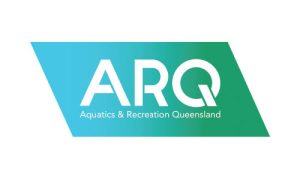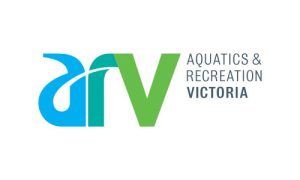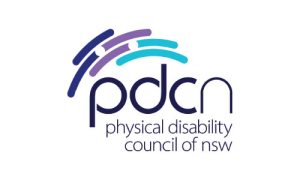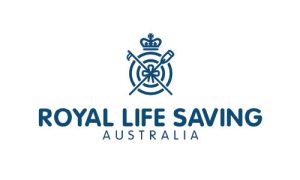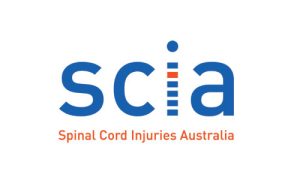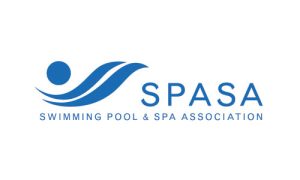Access to swimming pools and spas is a fundamental right for people with disabilities and seniors, providing not only physical but also social and emotional benefits. In Australia, one in five people has a disability, and 5.5 million are aged 65 or over. However, without appropriate equipment and infrastructure, accessing a pool or spa can be difficult or impossible.
Fortunately, the Building Code of Australia mandates that swimming pools over a 70m perimeter must have an accessible water entry/exit by means of a fixed or movable ramp and an aquatic wheelchair, a zero depth entry at a maximum gradient of 1:14 and an aquatic wheelchair, a platform swimming pool lift and an aquatic wheelchair, or a sling-style swimming pool lift. These solutions ensure dignified access for people with limited mobility.
Custom-built pool steps can also provide safe and easy access to a pool or spa for individuals who have difficulty climbing stairs or who use a wheelchair. Additionally, aquatic wheelchairs can be used on ramps to provide independence and enjoyment in the water.
Assistive technology like ceiling hoists and tracks can also make it easier for people with disabilities and seniors to move around a home or other spaces, such as bathrooms or gyms.
Providing access to pools and spas through these solutions benefits not only individuals with disabilities or seniors but also their families and friends. It promotes social inclusion and overall well-being. By 2057, there will be 8.8 million Australians aged 65 or over, highlighting the need for accessible facilities to support the aging population. Investing in accessibility infrastructure, including aquatic wheelchair, pool steps, and hoists, is essential to ensure equal access and opportunities for all Australians.

